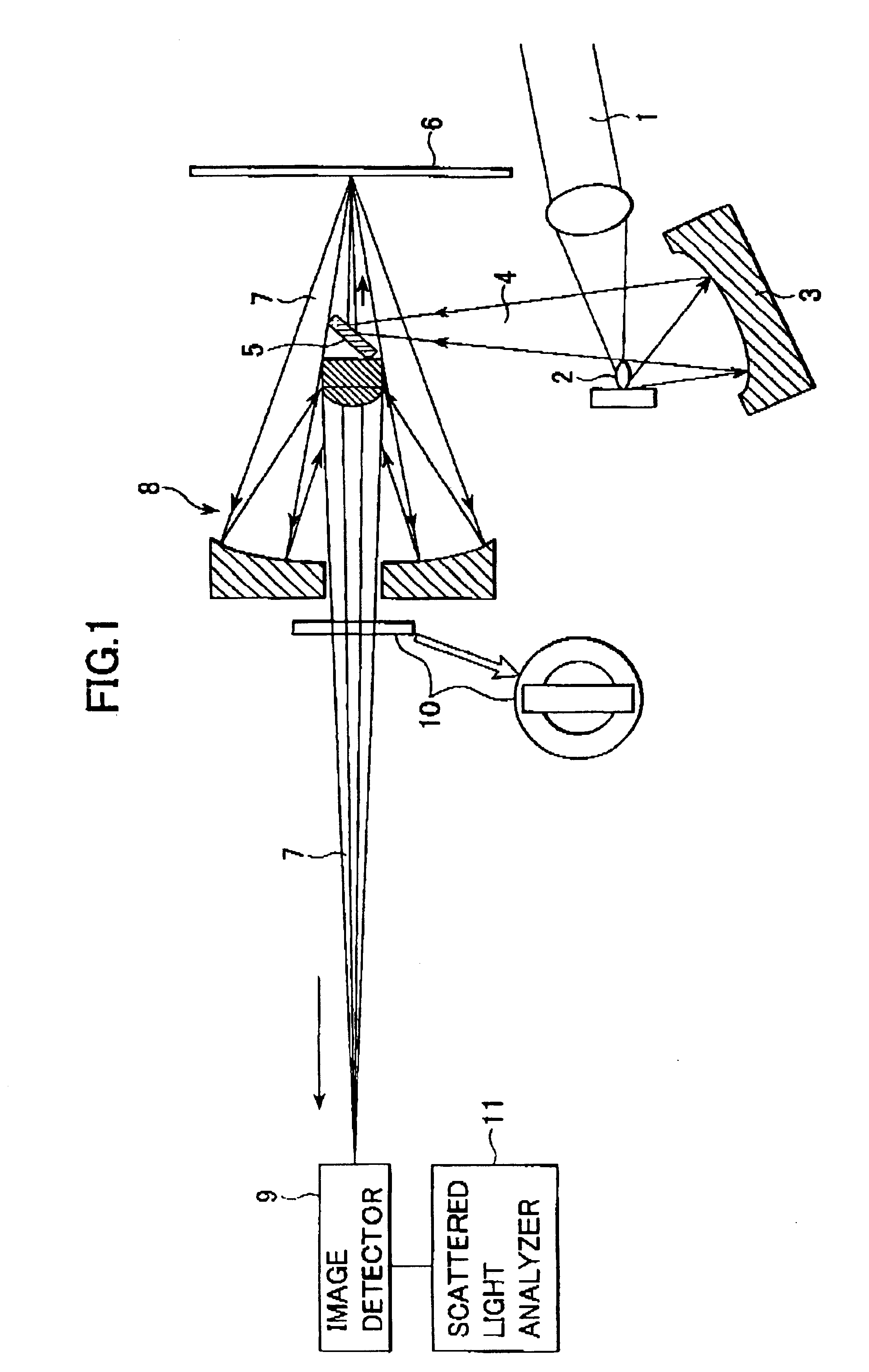Method and apparatus for inspecting multilayer masks for defects
a multi-layer mask and mask technology, applied in the field of multi-layer mask inspection, can solve the problems of increasing the power needed, affecting the inspection effect, so as to achieve the effect of compact apparatus
- Summary
- Abstract
- Description
- Claims
- Application Information
AI Technical Summary
Benefits of technology
Problems solved by technology
Method used
Image
Examples
Embodiment Construction
[0031]The present invention was perfected, as described below, after carrying out various considerations on inspection of defects on a multiplayer mask.
[0032]Specifically, as described above, dark-field observation makes it possible to detect defect-based signals with a very high contrast ratio, so that, as is clear from equation (1), it is possible to detect small defects within a large pixel. For the dark-field observation, it is necessary to use a light source having a wavelength that is near the peak of reflection spectrum of the multilayer reflective mask. As mentioned in the foregoing, Yi et al. demonstrated that it was possible to detect small defects within a large pixel in the dark-field observation with a synchrotron light source. However, the speed of the inspection by the method of Yi et al. was in the order of 1,000 times slower that what is needed in practice. Analyses carried out by the present inventors showed the reasons for this, which reasons are explained below.
[...
PUM
 Login to View More
Login to View More Abstract
Description
Claims
Application Information
 Login to View More
Login to View More - R&D
- Intellectual Property
- Life Sciences
- Materials
- Tech Scout
- Unparalleled Data Quality
- Higher Quality Content
- 60% Fewer Hallucinations
Browse by: Latest US Patents, China's latest patents, Technical Efficacy Thesaurus, Application Domain, Technology Topic, Popular Technical Reports.
© 2025 PatSnap. All rights reserved.Legal|Privacy policy|Modern Slavery Act Transparency Statement|Sitemap|About US| Contact US: help@patsnap.com



